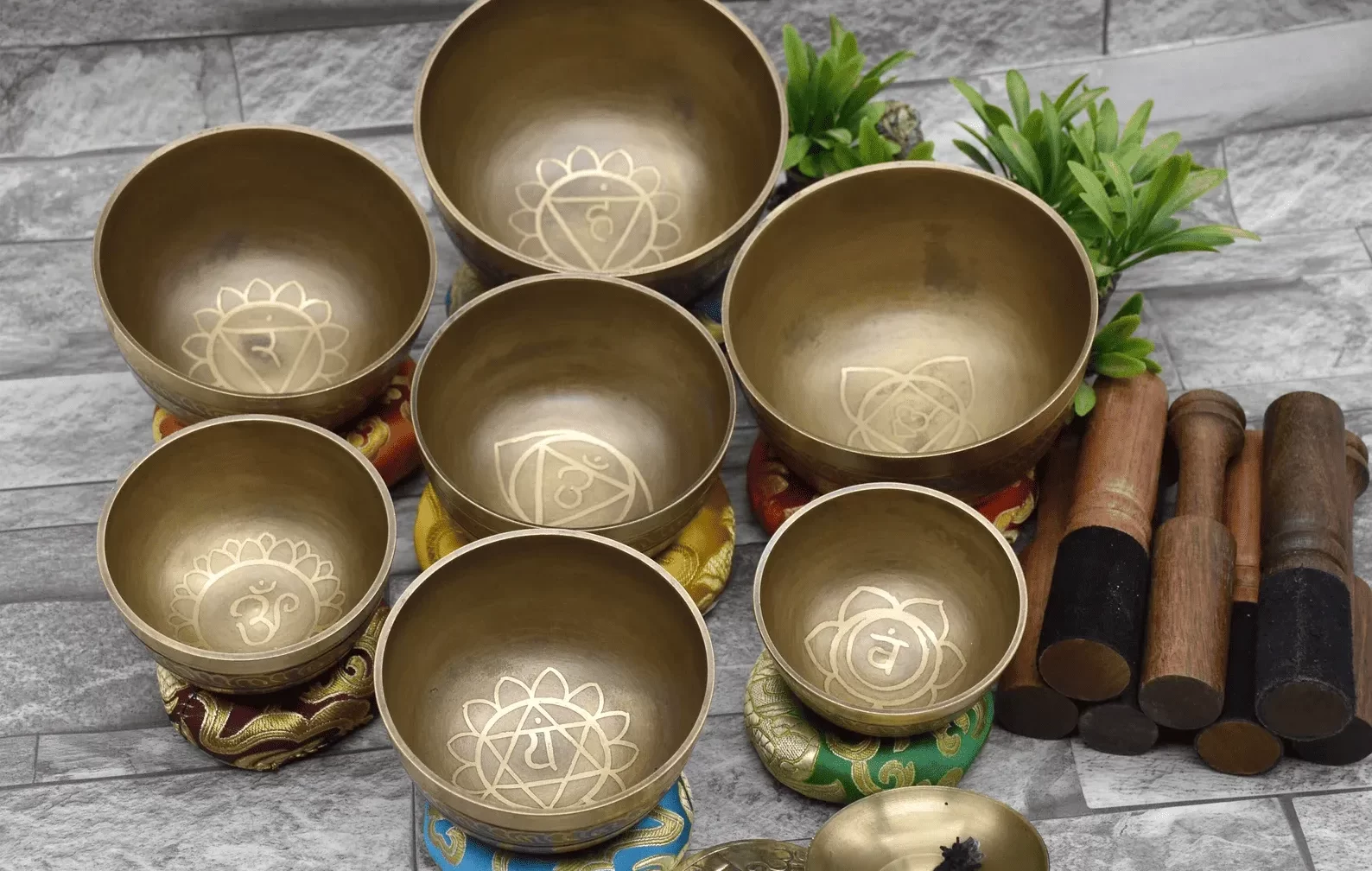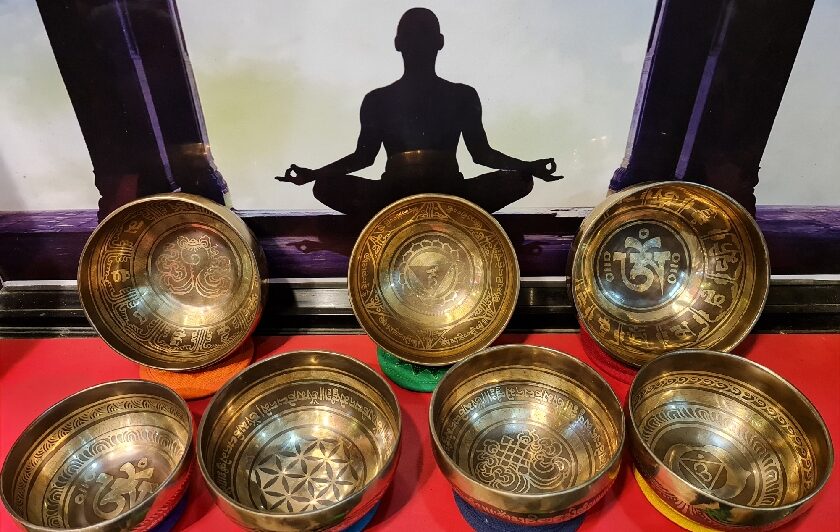Chitwan National Park, situated in the southern Terai region of Nepal, stands as a testament to the country’s dedication to preserving its biodiversity and cultural heritage. Spanning over 952.63 square kilometers, this UNESCO World Heritage Site is renowned for its dense tropical forests, expansive grasslands, and winding rivers that support a rich variety of wildlife. Established in 1973, the park has played a pivotal role in the conservation of endangered species such as the one-horned rhinoceros and Bengal tiger, symbolizing Nepal’s commitment to sustainable environmental practices and wildlife protection.
Beyond its natural splendor, Chitwan holds deep historical significance and cultural richness. The indigenous Tharu people, with their unique traditions and intimate knowledge of the forest ecosystem, have inhabited the region for centuries. Their harmonious relationship with nature is reflected in their sustainable agricultural practices and vibrant cultural heritage, which includes traditional dance, music, and craftsmanship. Visitors to Chitwan National Park can immerse themselves in this cultural tapestry through guided tours of Tharu villages, where they can witness firsthand the community’s daily life and participate in cultural performances.
For travelers seeking adventure and ecological discovery, Chitwan offers a plethora of activities. Jeep safaris through dense forests provide thrilling opportunities to spot wildlife such as rhinoceroses, sloth bears, and elusive Bengal tigers. Canoe rides along the Rapti River offer serene encounters with crocodiles and vibrant birdlife, while guided nature walks unveil the park’s diverse flora and fauna. Whether exploring the park’s wilderness on foot, by jeep, or through cultural interactions with the Tharu community, a visit to Chitwan National Park promises a transformative experience that blends conservation, cultural immersion, and natural beauty in one of Asia’s most cherished wildlife sanctuaries.
Jeep Safari
A Jeep Safari in Chitwan National Park is an exhilarating way to explore the dense forests and open grasslands. This guided tour provides an opportunity to spot some of the park’s most iconic wildlife.
Wildlife Sightings: The park is home to a variety of species, including the endangered Bengal tiger, one-horned rhinoceros, and Asian elephant. During the safari, you may also encounter leopards, sloth bears, and a plethora of bird species. The open-top jeeps allow for unobstructed views and excellent photo opportunities.
Landscape Diversity: The terrain of Chitwan National Park is incredibly diverse, ranging from dense sal forests to riverine grasslands. As you traverse these landscapes, you’ll gain a deeper appreciation for the park’s ecological richness and the habitats that support its wildlife.
Guided Expertise: Experienced guides accompany each safari, providing insights into the behavior and ecology of the animals you encounter. Their knowledge enhances the experience, making it educational as well as thrilling.
Best Time for Safari: The best time for a Jeep Safari is early morning or late afternoon when animals are most active. The cooler temperatures during these times also make for a more comfortable journey.
Safety Measures: Safety is paramount during the safari. Guides ensure that all participants follow park regulations and maintain a safe distance from the wildlife. The jeeps are equipped with first aid kits and communication devices for emergencies.
Photography Tips: To capture the best shots, bring a camera with a good zoom lens. Keep your camera ready at all times, as wildlife sightings can be sudden and fleeting. Early morning and late afternoon light provides the best conditions for photography.
Bath with Elephant
Bathing with elephants in Chitwan is a unique and interactive experience that allows you to get up close and personal with these gentle giants.
Interactive Experience: This activity typically takes place in the Rapti River, where you can help bathe the elephants. It’s a fun and refreshing way to connect with these magnificent creatures as they splash and spray water.
Understanding Elephant Behavior: During the bathing session, you’ll learn about elephant behavior and the bond between the mahouts (elephant handlers) and their elephants. This experience highlights the trust and communication that exists between them.
Conservation Insights: Bathing with elephants also provides an opportunity to learn about the conservation efforts in place to protect these endangered animals. You’ll gain insights into the challenges and successes of elephant conservation in Nepal.
Safety and Ethical Considerations: It’s important to choose operators that prioritize the welfare of the elephants. Ethical operators ensure that the elephants are well cared for and that the activities do not cause stress or harm to the animals.
Best Time for Bathing: The best time for elephant bathing is usually in the morning when the temperatures are cooler. This also aligns with the elephants’ natural bathing schedule.
Photographic Moments: Don’t forget to bring a waterproof camera or a GoPro to capture this memorable experience. The playful interaction between humans and elephants makes for fantastic photo opportunities.
Visit the Elephant Breeding Centre
The Elephant Breeding Centre in Chitwan National Park is dedicated to the conservation and breeding of Asian elephants.
Conservation Efforts: The center was established to increase the population of Asian elephants, which are endangered due to habitat loss and poaching. Here, you can learn about the breeding programs and the efforts to protect these majestic animals.
Educational Experience: Visitors to the center can observe the daily care routines of the elephants and gain insights into their lifecycle. Informational displays and talks by the staff provide a deeper understanding of elephant biology and conservation.
Interaction with Calves: One of the highlights of visiting the breeding center is seeing the elephant calves. These playful and curious young elephants are a joy to watch as they interact with their mothers and caregivers.
Responsible Tourism: The breeding center emphasizes responsible tourism practices. Visitors are encouraged to respect the space and well-being of the elephants and to support conservation efforts through donations and ethical tourism practices.
Best Time to Visit: The breeding center is open year-round, but the best time to visit is during feeding times, usually in the morning and late afternoon, when the elephants are most active.
Supporting Conservation: By visiting the Elephant Breeding Centre, you are supporting the conservation efforts aimed at preserving this endangered species. The entrance fees and donations go towards the care and protection of the elephants.
Canoeing at Rapti River
Canoeing on the Rapti River offers a peaceful and scenic way to explore the waterways of Chitwan National Park.
Tranquil Experience: The calm waters of the Rapti River provide a serene environment for canoeing. As you glide along the river, you can enjoy the tranquility and natural beauty of the park’s surroundings.
Wildlife Viewing: Canoeing offers a unique perspective on the park’s wildlife. You may spot various bird species, including kingfishers, herons, and egrets, as well as animals like crocodiles and gharials basking on the riverbanks.
Guided Tours: Expert guides accompany the canoeing trips, providing information about the river ecosystem and the wildlife you encounter. Their knowledge enhances the experience and helps you appreciate the rich biodiversity of the area.
Safety Considerations: Safety is a priority during canoeing trips. Life jackets are provided, and guides ensure that all participants are aware of safety protocols. The calm and shallow waters of the Rapti River make it a safe activity for all ages.
Best Time for Canoeing: Early morning and late afternoon are the best times for canoeing, as these are the peak hours for wildlife activity. The soft light during these times also creates a beautiful ambiance for photography.
Photographic Opportunities: Bring a waterproof camera or use a protective case for your camera to capture the stunning views and wildlife along the river. The reflections on the water and the lush greenery make for excellent photo opportunities.
Crocodile Breeding Center
The Crocodile Breeding Center in Chitwan National Park focuses on conserving and breeding crocodiles, particularly the critically endangered gharial.
Conservation Efforts:
The breeding center increases the population of gharials and marsh mugger crocodiles, which face threats from habitat loss and human activities. Here, you can learn about the breeding programs and the challenges of crocodile conservation.
Educational Experience: Visitors to the center can observe the different stages of crocodile development, from eggs to fully grown adults. Informational displays and talks by the staff provide insights into the biology and behavior of these fascinating reptiles.
Interaction with Hatchlings: One of the highlights of visiting the breeding center is seeing the crocodile hatchlings. These tiny reptiles are carefully monitored and cared for by the staff to ensure their survival.
Responsible Tourism: The breeding center emphasizes responsible tourism practices. Visitors are encouraged to respect the space and well-being of the crocodiles and to support conservation efforts through donations and ethical tourism practices.
Best Time to Visit: The breeding center is open year-round, but the best time to visit is during feeding times, usually in the morning and late afternoon, when the crocodiles are most active.
Supporting Conservation: By visiting the Crocodile Breeding Center, you are supporting the conservation efforts aimed at preserving these endangered species. The entrance fees and donations go towards the care and protection of the crocodiles.
Elephant Ride and Safari
An elephant ride and safari offer a unique way to explore the dense forests and grasslands of Chitwan National Park.
Unique Perspective: Riding on an elephant provides a higher vantage point, allowing you to see over tall grasses and dense foliage. This enhances your chances of spotting wildlife, including rhinos, deer, and various bird species.
Wildlife Viewing: The slow and steady pace of the elephant allows for a quieter approach to wildlife, increasing the likelihood of close encounters. The elephants themselves are accustomed to the presence of other animals, making them less likely to disturb the wildlife.
Guided Expertise: Experienced mahouts guide the elephants, ensuring a safe and informative journey. They share their knowledge about the park’s flora and fauna, enhancing your understanding and appreciation of the ecosystem.
Ethical Considerations: It’s important to choose operators that prioritize the welfare of the elephants. Ethical operators ensure that the elephants are well cared for and that the rides do not cause stress or harm to the animals.
Best Time for Safari: Early morning and late afternoon are the best times for an elephant safari, as these are the peak hours for wildlife activity. The cooler temperatures during these times also make for a more comfortable ride.
Photographic Moments: Bring a camera to capture the unique perspective and close encounters with wildlife. The slow pace of the elephant ride allows for ample time to take photos.
New Sauraha Tharu Cultural House
The New Sauraha Tharu Cultural House offers an immersive experience into the rich cultural heritage of the Tharu people, the indigenous inhabitants of the Terai region.
Cultural Performances: The cultural house hosts nightly performances of traditional Tharu dance and music. These vibrant and energetic performances provide a glimpse into the traditions and customs of the Tharu community.
Traditional Attire: Performers dressed in traditional Tharu attire showcase various dances that are significant to Tharu culture. Each dance tells a story, reflecting the daily life, festivals, and beliefs of the Tharu people.
Local Cuisine: Visitors can also enjoy authentic Tharu cuisine at the cultural house. Traditional dishes, prepared using locally sourced ingredients, offer a taste of the Tharu culinary heritage.
Handicrafts and Artifacts: The cultural house features a display of Tharu handicrafts and artifacts, including intricate wood carvings, pottery, and traditional instruments. Visitors can purchase these unique souvenirs as a reminder of their cultural experience.
Interactive Workshops: The cultural house occasionally hosts interactive workshops where visitors can learn traditional Tharu crafts, such as basket weaving and mud painting. These hands-on activities allow participants to engage directly with Tharu cultural practices.
Community Engagement: The New Sauraha Tharu Cultural House plays a vital role in preserving and promoting Tharu culture. By attending performances and workshops, visitors contribute to the sustainability of the cultural house and support the local Tharu community.
Opening Hours: The cultural house is open daily, with performances typically held in the evening. Check with the cultural house for the exact timing of performances and workshops during your visit.
Accessibility: Located in Sauraha, the cultural house is easily accessible from the main tourist areas of Chitwan National Park. Many tour operators include a visit to the cultural house as part of their itinerary, providing convenient access for visitors.
Valmiki Ashram
Valmiki Ashram, nestled within the serene forests of Chitwan National Park, holds religious significance for Hindu pilgrims and offers a tranquil retreat for nature enthusiasts.
Spiritual Retreat: The ashram is dedicated to Sage Valmiki, the author of the Hindu epic Ramayana. It serves as a place of worship and meditation for devotees seeking spiritual solace amidst nature.
Natural Setting: Surrounded by lush greenery and the sounds of birds and wildlife, Valmiki Ashram provides a peaceful environment for introspection and prayer. The tranquil atmosphere makes it a popular destination for yoga and meditation retreats.
Historical Significance: According to local beliefs, Sage Valmiki wrote parts of the Ramayana while residing in this forested area. Pilgrims visit the ashram to pay homage to Valmiki and to connect with the spiritual essence of the epic.
Nature Walks: Visitors can take leisurely walks around the ashram, exploring the forest trails and enjoying the natural beauty of Chitwan National Park. The serene surroundings offer opportunities for birdwatching and wildlife spotting.
Cultural Immersion: The ashram occasionally hosts cultural events and religious ceremonies that provide insights into Hindu traditions and rituals. Visitors are welcome to participate in these events and learn about local customs.
Visiting Tips: Respect the sanctity of the ashram by maintaining silence and following any specific rules or guidelines. Modest attire is recommended out of respect for the religious significance of the site.
Accessibility: Valmiki Ashram is located within Chitwan National Park, accessible via guided tours or independent visits from nearby accommodations in Sauraha or Meghauli.
Visit Bish Hajari Taal
Bish Hajari Taal, also known as Twenty Thousand Lakes, is a scenic wetland area within Chitwan National Park that supports a rich diversity of flora and fauna.
Natural Habitat: The wetlands of Bish Hajari Taal are a crucial ecosystem within Chitwan National Park, providing habitat for numerous bird species, amphibians, and aquatic animals. The area is characterized by marshes, ponds, and grasslands.
Birdwatching Paradise: Bird enthusiasts flock to Bish Hajari Taal to observe resident and migratory bird species. Highlights include endangered birds like the Bengal florican, as well as herons, storks, and kingfishers.
Biodiversity Hotspot: The wetlands support a variety of wildlife, including endangered species such as the gharial (fish-eating crocodile) and the smooth-coated otter. Visitors may also spot deer, wild boar, and other terrestrial animals near the water’s edge.
Ecotourism Activities: Guided tours and birdwatching excursions are available for visitors interested in exploring Bish Hajari Taal. Local guides provide insights into the wetland ecosystem and help identify bird species and wildlife.
Conservation Efforts: The conservation of Bish Hajari Taal is essential for preserving its biodiversity and ecological balance. Efforts include habitat restoration, monitoring of wildlife populations, and raising awareness about wetland conservation.
Photography Opportunities: Capture stunning photographs of birds in flight, reflections on the water, and the vibrant colors of the wetland vegetation. Early morning and late afternoon are ideal times for photography due to favorable lighting conditions.
Visitor Information: Entry to Bish Hajari Taal is included in the entrance fee to Chitwan National Park. Guided tours and birdwatching excursions can be arranged through local tour operators or accommodations in Sauraha and Meghauli.
Cycling in Chitwan
Cycling in Chitwan National Park offers a unique way to explore the park’s diverse landscapes and encounter wildlife up close.
Scenic Routes: The park features well-maintained cycling trails that wind through lush forests, grasslands, and along the banks of rivers and wetlands. These scenic routes provide ample opportunities for nature appreciation and wildlife spotting.
Wildlife Encounters: Cycling allows for quiet and non-intrusive wildlife viewing. You may encounter deer, monkeys, and various bird species along the trails. Keep a safe distance from wildlife and refrain from disturbing their natural behaviors.
Adventure and Exploration: Cycling enthusiasts can choose from a range of trail lengths and difficulty levels, from leisurely rides to more challenging routes. The park’s varied terrain offers something for cyclists of all skill levels.
Guided Cycling Tours: Local guides offer guided cycling tours that include insights into the park’s ecology, wildlife, and cultural heritage. They ensure a safe and informative experience while enhancing your understanding of the park’s conservation efforts.
Safety Measures: Wear appropriate safety gear, including helmets and reflective clothing, especially when cycling on shared trails or roads. Follow park regulations and respect wildlife habitats to minimize environmental impact.
Best Time for Cycling: Early morning and late afternoon are ideal times for cycling in Chitwan National Park, as temperatures are cooler and wildlife is more active. Avoid cycling during rainy or extreme weather conditions for safety reasons.
Bicycle Rentals: Bicycles can be rented from local tour operators or accommodations in Sauraha and Meghauli. Check in advance for availability and make arrangements for guided tours if desired.
Jungle Walks
Jungle walks in Chitwan National Park offer a close-up exploration of the park’s diverse ecosystems and wildlife habitats.
Nature Exploration: Guided jungle walks provide an intimate experience with nature, allowing you to observe wildlife and discover hidden gems within the park. Walks are conducted by experienced naturalists who share their knowledge of the local flora and fauna.
Birdwatching Opportunities: Chitwan National Park is a paradise for birdwatchers, with over 500 species of birds recorded. Jungle walks offer excellent opportunities to spot rare and migratory bird species, including raptors, waterfowl, and songbirds.
Wildlife Sightings: Encounter a variety of wildlife during your jungle walk, including one-horned rhinoceros, deer, monkeys, and wild boar. Your guide will help you track animal signs and interpret behaviors to enhance your wildlife viewing experience.
Educational Experience: Learn about the park’s conservation efforts and the importance of preserving its biodiversity. Guides provide insights into the challenges facing wildlife conservation and the role of ecotourism in supporting these efforts.
Safety Guidelines: Follow your guide’s instructions and stay on designated trails to ensure your safety and minimize disturbance to wildlife. Wear sturdy footwear and comfortable clothing suitable for walking in natural environments.
Best Time for Jungle Walks: Early morning and late afternoon are optimal times for jungle walks, as wildlife activity is highest during these cooler periods. Avoid walking alone or off-trail to minimize the risk of encountering wildlife unexpectedly.
Photography Tips: Bring a camera with a zoom lens to capture close-up shots of wildlife and scenic landscapes. Practice patience and silence to increase your chances of photographing shy or elusive animals.
Tharu Village Walk
A Tharu village walk offers an authentic cultural experience, allowing you to immerse yourself in the daily life and traditions of the indigenous Tharu community.
Cultural Immersion: Tharu villages are scattered throughout the outskirts of Chitwan National Park. Guided village walks provide an opportunity to interact with local residents, learn about their customs, and gain insight into their rich cultural heritage.
Traditional Architecture: Tharu houses are typically constructed using locally sourced materials such as mud, thatch, and wood. Your guide will explain the architectural features and functional aspects of these traditional dwellings.
Local Cuisine: Experience Tharu hospitality firsthand by visiting a local home or community center. Taste traditional Tharu dishes prepared with fresh ingredients, including rice, lentils, vegetables, and locally sourced meats.
Art and Handicrafts: Tharu communities are known for their vibrant art forms and handicrafts, including intricate beadwork, basketry, and pottery. Visit local artisans to observe their craftsmanship and purchase handmade souvenirs.
Cultural Performances: Some village walks include performances of traditional Tharu dance and music. These lively performances showcase the community’s cultural identity and celebrate important festivals and rituals.
Environmental Awareness: Learn about the Tharu community’s sustainable practices and their deep connection to the natural environment. Discover how traditional knowledge and practices contribute to conservation efforts in Chitwan National Park.
Respectful Interaction: Respect local customs and traditions during your village walk. Seek permission before taking photographs and avoid intrusive behavior that may disrupt the daily routines of residents.
Community Impact: By participating in a Tharu village walk, you support community-based tourism initiatives that empower local residents and promote cultural preservation. Your visit contributes to the economic livelihoods of Tharu families and strengthens cultural exchange.
Conclusion
Chitwan National Park offers a wealth of experiences for nature enthusiasts, wildlife lovers, and cultural explorers alike. Whether you’re embarking on a thrilling jeep safari, enjoying a serene canoe ride, or immersing yourself in the vibrant traditions of the Tharu community, each experience reveals the park’s unique charm and biodiversity. Plan your visit to Chitwan National Park with Trekking Routes Company to discover the wonders of this UNESCO World Heritage Site and contribute to its conservation efforts. Experience the magic of Chitwan National Park and create memories that will last a lifetime.







0 Comments